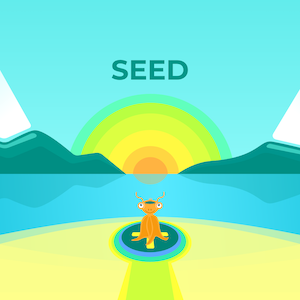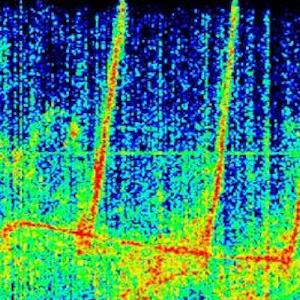“ I want to sing like the birds sing, far and wide, not worrying about who hears or what they think...”
― Rumi
The way music was shared or how sounds and instruments travelled 500 years ago in comparison how we do it today is vastly different. Today we rush to Youtube, Spotify, Discogs, Soundcloud or our favorite portal where music is categorized, archived, converted to data and even protected. That was not the case with most music a hundred years ago and definitely not the culture or possibility 500 years ago. Music - Transcending vast distances like an universal language : even if the people involved in the exchange and mutation were vastly different in words, cultures, rituals as well as races. Today we send and receive links to each other taking-up just a few seconds of transfer time. Back in antiquity it may have taken 500 plus years for the violin to reach Kerala (South India) from Bactria (Greece). Known to many that the 'Silk Route' played a pivotal role to connect remote regions of Europe and Trans-Asia with medieval India, China and the far-east for almost 1000 years. In this feature we look at the (trans)formation of 'Hindustani music' : The story of multi-ethnic collision, a transcontinental fusion that took place over a long period of time.
.
"the music of Serica (Land of Silk) haunts them even after they return to their homeland" wrote Seneca The Younger, Roman philosopher and poet, inspired by the narratives of the legionaries returning from the far-east expeditions via Persia during 15-25 AD.
― Rumi
The way music was shared or how sounds and instruments travelled 500 years ago in comparison how we do it today is vastly different. Today we rush to Youtube, Spotify, Discogs, Soundcloud or our favorite portal where music is categorized, archived, converted to data and even protected. That was not the case with most music a hundred years ago and definitely not the culture or possibility 500 years ago. Music - Transcending vast distances like an universal language : even if the people involved in the exchange and mutation were vastly different in words, cultures, rituals as well as races. Today we send and receive links to each other taking-up just a few seconds of transfer time. Back in antiquity it may have taken 500 plus years for the violin to reach Kerala (South India) from Bactria (Greece). Known to many that the 'Silk Route' played a pivotal role to connect remote regions of Europe and Trans-Asia with medieval India, China and the far-east for almost 1000 years. In this feature we look at the (trans)formation of 'Hindustani music' : The story of multi-ethnic collision, a transcontinental fusion that took place over a long period of time.
.
"the music of Serica (Land of Silk) haunts them even after they return to their homeland" wrote Seneca The Younger, Roman philosopher and poet, inspired by the narratives of the legionaries returning from the far-east expeditions via Persia during 15-25 AD.
"Cosmas Indico, Byzantine scholar (6th Century AD) documented the exchange of musical instruments via traders and nomadic tribes using oceanic routes stretching from Anatolia (Turkey) to Sri Lanka and even over-land to China and Mongolia.
"Peace deals were made many times between the invaders and defenders by exchanging weapons, musical instruments and even musicians and dancers from each side" states Jean Lambert eminent historian tracing the history of medieval arabic and african musical instruments found allover India, China and the far-east.
"take the case of the flute : There is much debate and controversy over the origins of the instrument. Oldest prototype of one-note flutes date to 4400 BCE in ancient Egypt as well as Anatolia (Turkey) jump to the 12 note 'Ney' from Iran formed circa 550 AD to the 7 hole 'Bansuri' of North India widely prevalent in the 15th century to the tribal 2 tone 'Sodina' in Madagascar which dates around 900AD " states Professor Markus Wright at Yale University, trying to demonstrate how far a tool and or a simple musical instrument can travel and transform over time.
A big yet gradual collision of ethnicities would pave the route for new musical traditions and practices : Via the exchange of instruments, introduction of new scales, poetry, lyrical and vocal customs intermingling for over 650 years (roughly 900 AD to the end of 1650s) : that shaped the grounds of what came to be known as 'Hindustani Music'. The Indian peninsula witness to mass invasions, destruction and reconstruction, conversion, re-conversion, migration and multi-ethnic collisions for centuries. The cultural landscape of north India would transform gradually giving way to new forms specific to regions and with distinctions patronized by the monarchs and emperors of the day. Over time, a true Indo-Muslim musical form would appear in North India which would set the standards not just for music but for dance, societal rituals, festivals, funerals as well as a range devotional religious content in many dialects. In India, 1500 till 1660 is generally considered as a period of 'Renaissance' for music, dance, poetry and the arts. An era of diversity, economic prosperity and confluence which reflected in the music, architecture, art and artesian crafts, food and multitude of customs and traditions. Collusion of mystic and islamic music with Ragas (Scales) and Matras (Beats) of north India continued centuries over. which exists till date as Qawali and Sufi music in Pakistan, India and Bangladesh. Reminiscent to the birth of Flamenco music in Andalusia Spain, circa 1040 AD as Arab, Christian, Jewish and Pagan musical ethics colluded for the first time in history. Scholars and ethno-musicologists have often debated over the possible links of Kathak and Flamenco : as 'separated' forms of music and dance, born at two extreme geographic ends of the Islamic empire, stretching from 'Hispania' in the west to 'Indica' in the east (circa 950 AD). Musicians and luthiers alike from as far as Iran, Egypt and Turkey would arrive to various regions of 'Hindustan' (The word derived from the Persian word Hindū for the land beyond Sindhū). Hindustani Music as a field of study has been often tainted by the shadow of orientalism cast upon by the british colonizers, writers and historians all through 17/18/19th century India. "The native musicians play a melody which seems rather obtuse as well as not correlational with equal pitch" writes Donald Campbell a Scotsman visiting Awadh (Oudh) in 1788. The term 'equal pitch' being in question : He like many western philanthropes simply did not comprehend that microtonal scaling would create anomalies and sounds which the twelve-tone scaled instruments of Europe could not. Many european scholars visiting late 19th century India would settle for a general cliche : 'That Hindustani Music was created by Mughal patronage' - Contrary to fact, completely missing the cadence of development and collusion of many past cultures, sensibilities and empires stretching almost 800 years in the making. By the mid 1700s with european colonization eminent on the horizon, Hindustani music would witness rapid and rather conservative changes in the following century.
Roshan-ud Daula Kothi (renamed Qaiserbad post english colonization) was constructed early 1700 in Lucknow. Then northern India's busiest academy of Hindustani music, Urdu literature, poetry, dance as well as the principle court of the prevailing royal family.
"Peace deals were made many times between the invaders and defenders by exchanging weapons, musical instruments and even musicians and dancers from each side" states Jean Lambert eminent historian tracing the history of medieval arabic and african musical instruments found allover India, China and the far-east.
1691 biographer of the nobility, the Mughal court-writer Shér K. Lodi penned “it is impossible to capture it's essence in pen and ink on the surface of a page... the music is arriving from somewhere else I feel...” The statement, 300 plus years on kind of true, about Hindustani music.
How Arab, Persian, Central Asian oriental music collided with existing music northern and southern India is highly debated and often a politicized discourse. Yet the cadence of ethno-musical research is rich with thousands of examples describing the transformation and often 'im-pure' confluences. There is little academic study or evidence to explain how Sanskrit based music ideologies mixed with Persian and Arab counterparts over time [Re-formation of Ragas, Talas, Matras, Sargam and Arohi] How the invader and the invaded confronted each other without weapons, instead via music, instruments and new languages (Urdu, Punjabi, Bengali etc) ? Historian Razda Abboud of Cairo University states "Luthiers based in India during the height of the Mughal empire were very much in contact with their counterparts in Iran or Egypt ... Hindustani music was known in Cairo because of the Trans_Mughal legacy"
How Arab, Persian, Central Asian oriental music collided with existing music northern and southern India is highly debated and often a politicized discourse. Yet the cadence of ethno-musical research is rich with thousands of examples describing the transformation and often 'im-pure' confluences. There is little academic study or evidence to explain how Sanskrit based music ideologies mixed with Persian and Arab counterparts over time [Re-formation of Ragas, Talas, Matras, Sargam and Arohi] How the invader and the invaded confronted each other without weapons, instead via music, instruments and new languages (Urdu, Punjabi, Bengali etc) ? Historian Razda Abboud of Cairo University states "Luthiers based in India during the height of the Mughal empire were very much in contact with their counterparts in Iran or Egypt ... Hindustani music was known in Cairo because of the Trans_Mughal legacy"
" Well-known Hindustani forms such as Dhrupad, Khyal, Dhari and Thumri are a result of ethnic and religious fusion over decades or even centuries ... the diversity which can be seen in the lineage of north Indian maestros as well as instruments from 15th till late 18th century" states N. Ramanathan, an eminent musicologist based in Chennai.
"take the case of the flute : There is much debate and controversy over the origins of the instrument. Oldest prototype of one-note flutes date to 4400 BCE in ancient Egypt as well as Anatolia (Turkey) jump to the 12 note 'Ney' from Iran formed circa 550 AD to the 7 hole 'Bansuri' of North India widely prevalent in the 15th century to the tribal 2 tone 'Sodina' in Madagascar which dates around 900AD " states Professor Markus Wright at Yale University, trying to demonstrate how far a tool and or a simple musical instrument can travel and transform over time.
A big yet gradual collision of ethnicities would pave the route for new musical traditions and practices : Via the exchange of instruments, introduction of new scales, poetry, lyrical and vocal customs intermingling for over 650 years (roughly 900 AD to the end of 1650s) : that shaped the grounds of what came to be known as 'Hindustani Music'. The Indian peninsula witness to mass invasions, destruction and reconstruction, conversion, re-conversion, migration and multi-ethnic collisions for centuries. The cultural landscape of north India would transform gradually giving way to new forms specific to regions and with distinctions patronized by the monarchs and emperors of the day. Over time, a true Indo-Muslim musical form would appear in North India which would set the standards not just for music but for dance, societal rituals, festivals, funerals as well as a range devotional religious content in many dialects. In India, 1500 till 1660 is generally considered as a period of 'Renaissance' for music, dance, poetry and the arts. An era of diversity, economic prosperity and confluence which reflected in the music, architecture, art and artesian crafts, food and multitude of customs and traditions. Collusion of mystic and islamic music with Ragas (Scales) and Matras (Beats) of north India continued centuries over. which exists till date as Qawali and Sufi music in Pakistan, India and Bangladesh. Reminiscent to the birth of Flamenco music in Andalusia Spain, circa 1040 AD as Arab, Christian, Jewish and Pagan musical ethics colluded for the first time in history. Scholars and ethno-musicologists have often debated over the possible links of Kathak and Flamenco : as 'separated' forms of music and dance, born at two extreme geographic ends of the Islamic empire, stretching from 'Hispania' in the west to 'Indica' in the east (circa 950 AD). Musicians and luthiers alike from as far as Iran, Egypt and Turkey would arrive to various regions of 'Hindustan' (The word derived from the Persian word Hindū for the land beyond Sindhū). Hindustani Music as a field of study has been often tainted by the shadow of orientalism cast upon by the british colonizers, writers and historians all through 17/18/19th century India. "The native musicians play a melody which seems rather obtuse as well as not correlational with equal pitch" writes Donald Campbell a Scotsman visiting Awadh (Oudh) in 1788. The term 'equal pitch' being in question : He like many western philanthropes simply did not comprehend that microtonal scaling would create anomalies and sounds which the twelve-tone scaled instruments of Europe could not. Many european scholars visiting late 19th century India would settle for a general cliche : 'That Hindustani Music was created by Mughal patronage' - Contrary to fact, completely missing the cadence of development and collusion of many past cultures, sensibilities and empires stretching almost 800 years in the making. By the mid 1700s with european colonization eminent on the horizon, Hindustani music would witness rapid and rather conservative changes in the following century.
In a recent ongoing study titled Histories of the Ephemeral: Writing on Music in Late Mughal India at Kings College England, Katherine Schofield searches the lost history of Hindustani music and famous Mughal-era court musicians. "the ephemeral experience of music once the last sound has died away?" Her study reveals various fascinating documents, poetry, songs as well as histories about Hindustani music having direct ties with Persian, Afghan and Central-Asian music : Leading up-to the prevailing conditions during the last century of the Mughal empire. See works of Khvājū Kirmānī (1352 AD)
What caused the segregation of classical music from folk and non-devotional music in India, is not exactly known : Yet the 'expulsion' of nomadic, folk and non-devotional music from various imperial courts, temples, cultural and royal patronage caused a clear bifurcation within the diverse legacy of Hindustani music as well as the artists, luthiers and audiences. Mystic Sufi, 'courtesan' and folk music would continue to thrive outside the elite prosperous institutions which were dedicated to devotional ideologies and custodian-based-education [the teacher referred usually as Guru, Ustaad, Pandit, Maharaj etc]. Consumption of alcohol, meat and drugs would be subsequently forbidden in most of these institutions. Further, a clear segregation of male and female grooming would ensue inside such institutions. The instruments, the rudiments and the Ragas would remain the same, yet the lyrical content and presentation would radically detach itself from it's erstwhile diversity and openness. The new Rajas and the European rulers and patrons would embrace the purist classical form, albeit always unaware of it's deep transcontinental legacy and diverse roots. Post 1800s, powerful "Gharanas" (Patrilineal conservatories of music education) would rise allover north and south india, as bastions of musical heritage and knowledge, yet often devoid of mutual association. As late as 1904, Vishnu Narayan Bhatkhande consolidated the musical structures of Hindustani classical music making it available in written form the first time : Modern revision and music ethnology deemed the broad classifications of Bhatkhande to be flawed yet it is useful in a "heuristic" sense. At the turn of the 20th century, Hindustani classical music would appear detached from it's erstwhile diversity, religious tolerance and multi-ethnic status : transformed into a set of smaller and elite family based traditions for most musicians, patrons as well as audiences, as seen currently in India. Partition of the India, with the formation of Pakistan in 1947, would cause more fissures within the subcontinental fabric of Hindustani music. Post Independence, Hindustani music in India, has received increasing patronage (public and corporate) and even the brief stints of international spotlight : yet in light of it's erstwhile legacy and 'open spirit', it seems mostly sequestered by elitism cloistered in class hierarchy. Currently under the 'tutelage and authority' of the various 'Gharanas' and a few institutions, who are mostly vested in fostering and conservation of lineage. Verging on various levels of despotism, if we view ground reality. Rural folk music (dozens and dozens in variety) would simplify, borrow and deconstruct Hindustani music in myriad ways, now heard allover the Indian subcontinent, including Pakistan, Bangladesh and Nepal in over 10 languages and dialects. A significant part of the early Bollywood music legacy owes it's source of inspiration (and success) to the vast heritage of Hindustani music. Today approximately 650 million people are familiar with Hindustani Music in one form or another on a daily basis.
MUST READ ! https://www.kcl.ac.uk/artshums/depts/music/research/proj/Histories-of-the-Ephemeral.aspx
What caused the segregation of classical music from folk and non-devotional music in India, is not exactly known : Yet the 'expulsion' of nomadic, folk and non-devotional music from various imperial courts, temples, cultural and royal patronage caused a clear bifurcation within the diverse legacy of Hindustani music as well as the artists, luthiers and audiences. Mystic Sufi, 'courtesan' and folk music would continue to thrive outside the elite prosperous institutions which were dedicated to devotional ideologies and custodian-based-education [the teacher referred usually as Guru, Ustaad, Pandit, Maharaj etc]. Consumption of alcohol, meat and drugs would be subsequently forbidden in most of these institutions. Further, a clear segregation of male and female grooming would ensue inside such institutions. The instruments, the rudiments and the Ragas would remain the same, yet the lyrical content and presentation would radically detach itself from it's erstwhile diversity and openness. The new Rajas and the European rulers and patrons would embrace the purist classical form, albeit always unaware of it's deep transcontinental legacy and diverse roots. Post 1800s, powerful "Gharanas" (Patrilineal conservatories of music education) would rise allover north and south india, as bastions of musical heritage and knowledge, yet often devoid of mutual association. As late as 1904, Vishnu Narayan Bhatkhande consolidated the musical structures of Hindustani classical music making it available in written form the first time : Modern revision and music ethnology deemed the broad classifications of Bhatkhande to be flawed yet it is useful in a "heuristic" sense. At the turn of the 20th century, Hindustani classical music would appear detached from it's erstwhile diversity, religious tolerance and multi-ethnic status : transformed into a set of smaller and elite family based traditions for most musicians, patrons as well as audiences, as seen currently in India. Partition of the India, with the formation of Pakistan in 1947, would cause more fissures within the subcontinental fabric of Hindustani music. Post Independence, Hindustani music in India, has received increasing patronage (public and corporate) and even the brief stints of international spotlight : yet in light of it's erstwhile legacy and 'open spirit', it seems mostly sequestered by elitism cloistered in class hierarchy. Currently under the 'tutelage and authority' of the various 'Gharanas' and a few institutions, who are mostly vested in fostering and conservation of lineage. Verging on various levels of despotism, if we view ground reality. Rural folk music (dozens and dozens in variety) would simplify, borrow and deconstruct Hindustani music in myriad ways, now heard allover the Indian subcontinent, including Pakistan, Bangladesh and Nepal in over 10 languages and dialects. A significant part of the early Bollywood music legacy owes it's source of inspiration (and success) to the vast heritage of Hindustani music. Today approximately 650 million people are familiar with Hindustani Music in one form or another on a daily basis.
MUST READ ! https://www.kcl.ac.uk/artshums/depts/music/research/proj/Histories-of-the-Ephemeral.aspx































0 -